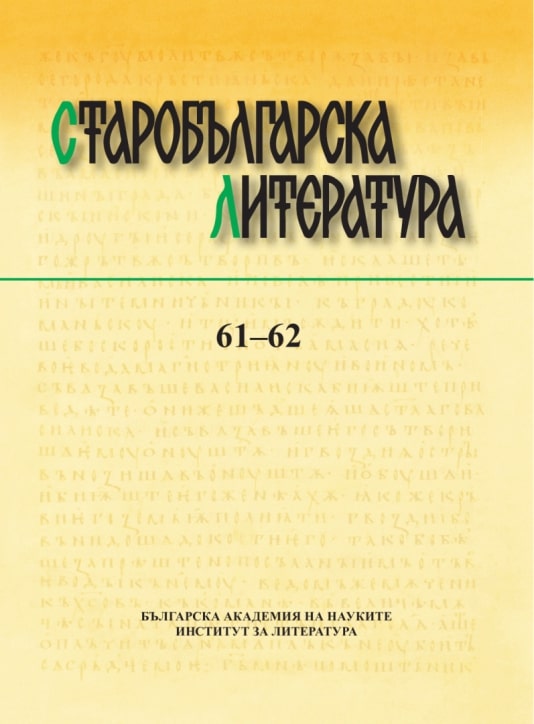Текст и визуален език в Радомировия псалтир
Text and Visual Language in the Radomir Psalter
Author(s): Elissaveta MoussakovaSubject(s): Christian Theology and Religion, History, Language and Literature Studies, Fine Arts / Performing Arts, Cultural history, Studies of Literature, Middle Ages, Theology and Religion, Philology, History of Art
Published by: Институт за литература - БАН
Keywords: Psalter; illumination; teratological ornament; Apocalypse; Middle Age literature
Summary/Abstract: In the Radomir Psalter script and illumination act together to produce a powerful visual and psychological effect on the viewer. In analyzing their modus operandi, the paper focuses on the paleographical features and the most striking imagery in the decoration, involving representations of human hands, snakes/dragons and birds. This selection of motifs has its focal point in the large-scale composition on f. 167r, showing a heraldic couple of monstrous birds (or flying dragons), intertwined with a couple of snakes/dragons. Assuming the double function of a headpiece and tailpiece, it marks the end of the Psalter where djak Radomir left his colophon and the beginning of the added “Story about Saul Chasing David.” The latter, still not properly studied, is considered an original Slavonic literary work. Its highly emotional content, when juxtaposed to the scribe’s note asking ‘readers’ to commemorate his father, suggests a very personal reason behind the creation of this manuscript. The study of the ornaments reveals encoded apocalyptic—and respectively soteriological—notions connecting in a single verbal and visual complex the devotional character of the Psalter as a book and private prayer for mercy and salvation. When considered in a broader socio-historical perspective, the manuscript’s illumination suggests that the book was created at a time when thirteenth-century Bulgarian society feared yet again the coming of the ‘last days’. In that respect, the author raises the open question to what extent the spread of the visual language so characteristic for the illumination of thirteenth-fourteenth century South- and East Slavonic manuscripts and usually termed ‘teratological style’ or ‘teratological ornament’ might have been prompted by such a collective sensibility.
Journal: Старобългарска литература
- Issue Year: 2020
- Issue No: 61-62
- Page Range: 139-160
- Page Count: 22
- Language: Bulgarian
- Content File-PDF

